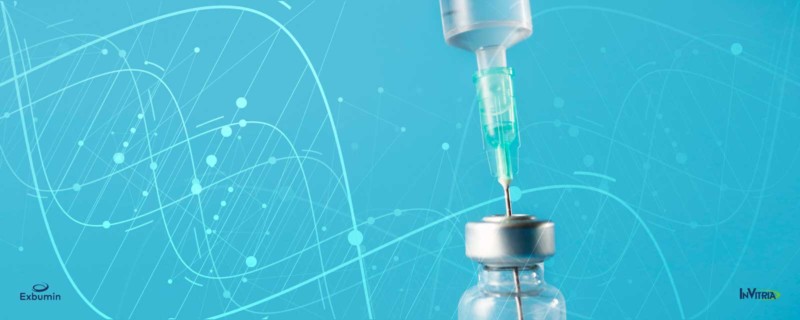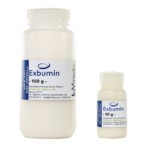
Recombinant Human Serum Albumin Excipient – Regulatory Filing and Approval for Use in Vaccine Manufacturing
During the 2020 Excipient World Conference & Expo, supported by IPEC-Americas, Kara Quinn, the Associate Director of Engineering for Merck & Co, presented a webinar detailing the first-hand account of the complex process of regulatory agency filing that led to the regulatory approval, by both the FDA and EMA, for the use of a novel excipient, Exbumin™, in the manufacture of their first-in-class Ebola vaccine ERVEBO®.
Ebola Vaccine Development
In 2014, West Africa experienced the worst outbreak of Ebola in recorded history and the first confirmed transmission outside of Africa, demonstrating a desperate need for global relief and support. At that time, Merck purchased the patent rights to the Ebola vaccine from BioProtection Systems Corp. so that clinical trials and emergency doses could begin in earnest.
Kara opened the webinar by summarizing the work done by multiple groups and institutions to develop the Ebola vaccine. It was a collaborative effort between The Canadian National Microbiology Laboratory (Winnipeg, Canada), U.S. Army Medical Research Institute of Infectious Diseases, IDT Biologika, and BioProtection Systems Corp.
One of Kara’s roles at Merck was to evaluate the raw material ingredients in early development programs to identify opportunities for risk mitigation and develop a plan for commercial qualification – starting with the excipients. In the case of the Ebola vaccine, this appeared to be simpler than it turned out to be.
rHSA – Novel Excipient or Not?
During her due diligence investigation, Kara found that blood or plasma-derived serum albumin (HSA or pHSA) and even rHSA was not new to pharmaceutical drug development and commercialization; human albumin is listed in the FDA database for ”Inactive Ingredients for Approved Drug Products.” As the functionality and structure of rHSA has been proven to be equivalent to pHSA, this did not cause any initial concern. Additionally, Merck itself had first-hand experience with both plasma-derived HSA and subsequently yeast-derived recombinant HSA, which was used in the manufacturing of its MMR® II vaccine.
A timely attendance to a 2017 conference workshop given by an FDA official recommended the use of the Controlled Correspondence for Product-specific Bioequivalence as a tool for sponsors to address any ambiguity with regard to excipient use. This encouraged Kara to reach out to the health authorities (FDA and EMA) to clarify the definition of novel and settle the internal debate about the status of the animal- and blood-free rHSA used in the Ebola vaccine. Prior to consultation with the regulatory bodies, further investigation on the use of rHSA brought up several concerns:
- The yeast-derived rHSA in Merck’s MMR®II vaccine was used in manufacture, but was not present in the final product
- As such, the yeast-derived rHSA was not an approved excipient
- Guidance documents state that it is incumbent on the drug manufacturer to build the case of “fit-for-function” of a substance to be used as a human medicinal excipient
A detailed technical and toxicological equivalence package outlining the nonclinical and clinical safety data along with detailed information on the origin and manufacture of InVitria’s animal- and blood-free rHSA Exbumin was assembled to present to the FDA and EMA.
Conclusion: Both the FDA and EMA determined that “the application of 0.25% rHSA as the stabilizing component within the 1 mL dose of the Ebola vaccine administered by IM sterile injection is considered a novel excipient.”
Regulatory Filing Process for a Novel Excipient
The equivalence package originally submitted very closely resembled the final dossiers for the approval of the novel excipient. After initial review by regulatory bodies, the toxicological assessment was deemed sufficient with no further data required. In addition, complementary details were provided by Merck and InVitria regarding the characterization and controls of the manufacturing process to produce the animal-and-blood-free rHSA (e.g., manufacturing process characterization and validation, analytical method development and validation, and protein characterization).
Overall, Kara found the experience with the regulatory bodies as well as the excipient manufacturer, InVitria, to be transparent and collaborative where they operated as a team to navigate the process to approval. Invitria was integral to obtaining regulatory approval and committed to the process with Merck from Day 1, which Kara noted was of critical importance particularly when asked to disclose what she felt was information critical to the intellectual property of InVitria.
A New Excipient for All – Exbumin
At the end of this journey, the collaboration between the regulatory authorities, Merck, and InVitria delivered a new, approved excipient to the market, opening the doors for other vaccine manufacturers to use Exbumin as an excipient in emerging vaccines.
Final Thoughts and Advice
A raw material is not considered an excipient until a drug manufacturer chooses to incorporate it into its drug product. At that point, the excipient becomes integrated into the complex matrix of the final product and, as such, must be shown in this context that it is “fit-for-function.” As stated by regulatory agencies, the decision to introduce a raw material as an excipient comes with the commensurate responsibility on the drug product manufacturer to demonstrate its characteristics, function, and controls through adequate testing. This necessitates a strong partnership with the excipient manufacturer, as was the case with InVitria and Exbumin. It requires a commitment from both the excipient and drug product manufacturers to thoroughly characterize their respective products throughout their lifespans for success.
Now, more than ever before, it is critical for drug product manufacturers to remove potential roadblocks and be able to move swiftly through development, testing and approval of life-saving vaccines.